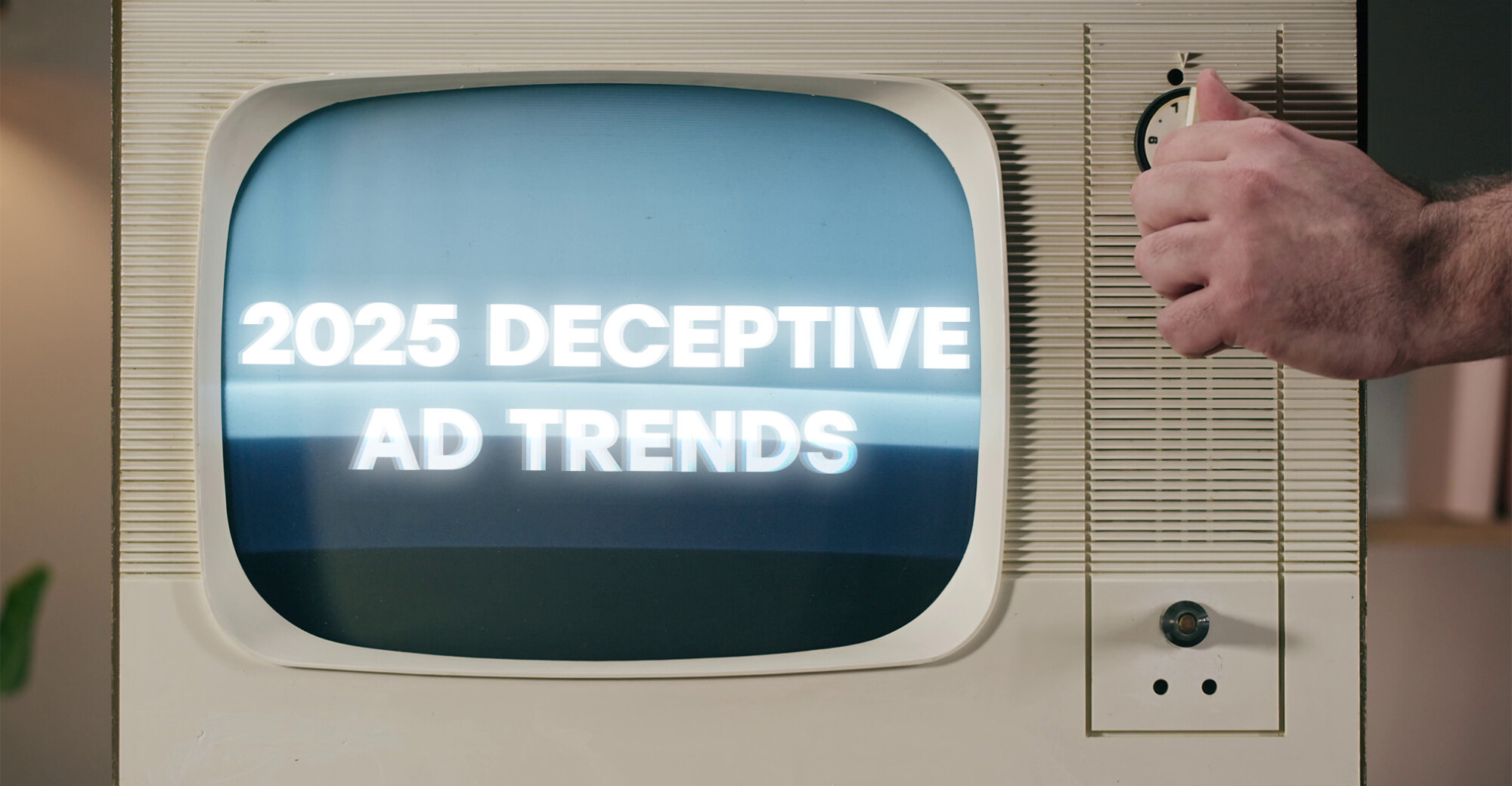
2025 Deceptive Ad Trends
A closer look at what we’ll be monitoring in the new year.
TINA.org explores the divide between the marketing and the science.
LED face masks have become quite the hot topic among celebrities. In fact, according to one LED face mask company, Kim Kardashian became so obsessed she gave them as Christmas gifts one year; Cillian Murphy doesn’t take the red carpet without first going under the mask; and Lily Collins doesn’t just wear a mask when she’s playing Emily Cooper in “Emily in Paris,” she’s got one at home as well. It’s no wonder an LED face mask was among the luxury items in a $1 million swag bag at the Golden Globes last month.
LED face masks aren’t just for the rich and famous, though. Regular folks have been seen donning the Stormtrooper-style masks on social media as well.
But do these trendy at-home devices, which are marketed to address a myriad of skin conditions and issues, actually work as advertised?
TINA.org took a closer look at three LED face masks ranging in cost and found a divide between the marketing and the science.
We’ll start with the ads.
The marketing
LED face masks purport to bathe the skin in wavelengths of light measured in nanometers that vary depending on the type of light emitted. The most popular forms of light used in LED masks are red and blue, both of which are able to penetrate the skin.
This reportedly prompts a response from the cells within the skin, including increased collagen production, which, marketers claim, leads to a host of skin benefits for users. Let’s take a look at some examples:
How do these claims stack up? Let’s find out.
The science
Dermatologists have been using phototherapy or light therapy for years to treat a variety of skin ailments – even amid mixed results. For example, some reports have found that LED treatments, including those conducted in doctors’ offices, may be effective at improving wrinkles, acne and acne scars, while other analyses have found limited evidence regarding the ability to address acne.
Meanwhile, the American Academy of Dermatology warns that while some studies indicate that in general LED devices that use red light are capable of producing “subtle to noticeable” results when used to treat skin issues such as fine lines and wrinkles, dark spots and redness, “it’s difficult to know how effective at-home devices are.”
Power appears to be a factor. Experts say one of the ways in which at-home devices may differ from those used in a dermatologist’s office is the power or strength of the products, which has a direct effect on performance. According to one board-certified dermatologist:
Not all at-home devices deliver the same strength that a clinical device can. What can be accomplished at home will not always have the same effect as what can be achieved at a dermatologist’s office, where treatment is calibrated and regulated.
With regard to different color settings, some experts caution against LED face masks that offer a “rainbow” of lights (such as Skin Gym’s product), saying the only wavelengths shown to be effective are red, near-infrared and blue.
Of the three companies illustrated above, CurrentBody was the only one to offer any support on its website in an attempt to back up its health claims. This came in the form of a two-page report summarizing the results of a “clinical study” that the company said used “expert evaluations” and “objective data.” However, the summary lacks many important details (like whether or not any of the findings were statistically significant), does not mention the use of a control group and states that the study only examined 35 participants, a relatively small sample size from which to draw reliable conclusions that can be applied to the general population.
It’s also important to note that “FDA cleared” (a term used to market many LED face masks, including the one sold by CurrentBody) does not mean that the FDA has evaluated the device and determined that the product is safe and effective for its advertised uses. It simply means the FDA has determined that the device is “substantially equivalent” to another legally marketed device. In other words, “FDA cleared” should not be confused with “FDA approved,” which requires a more stringent review process.
CurrentBody responds
CurrentBody did not provide the study when requested by TINA.org. Nor did the company include in its response the “extensive clinical research” on the benefits of red (633 nm), near-infrared (830 nm) and deep near-infrared (1072 nm) that it said substantiates its health claims.
After TINA.org pointed out that CurrentBody was using the FDA’s logo in apparent violation of the agency’s name and logo policy, the company removed one of the images bearing the FDA’s logo from a photo gallery on the mask’s product page but another image with the logo remains.
CurrentBody also removed the “world’s most powerful anti-aging LED face mask” claim, which it said was “outdated.”
Mirabella Beauty and Skin Gym did not respond to TINA.org’s requests for comment.
The bottom line
If you are considering purchasing an LED face mask, do your research and consider talking to your dermatologist or other healthcare provider about the concerns you’re looking to address with these at-home devices.
Find more of our coverage on medical devices here.
A closer look at what we’ll be monitoring in the new year.
How the supplement industry is taking advantage of women and what TINA.org is doing to fight it.
U.K. ad regulator takes issue with celeb endorsement.


